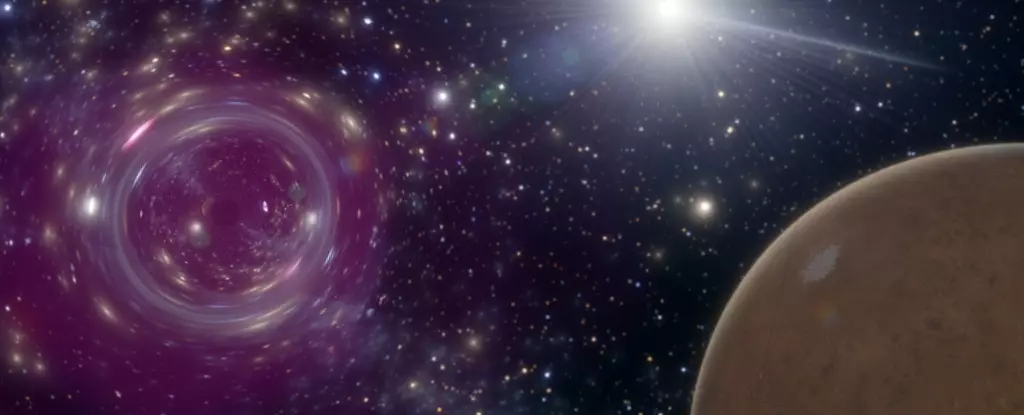Recent research has opened a captivating dialogue about the potential existence of primordial black holes (PBHs), which are theorized to be remnants from the earliest moments following the Big Bang. Unlike the black holes formed from collapsing stars, PBHs are presumed to have formed when high-density regions of ionized matter rapidly collapsed into small, dense entities in the universe’s infancy. These ancient black holes, believed to be scattered across the cosmos over 13.8 billion years, are often suggested as plausible candidates for constituting dark matter, a mysterious substance that exerts gravitational effects but does not emit light.
The study of PBHs is crucial in astrophysics as it might provide insights into some of the universe’s most enigmatic phenomena. Researchers assert that these minuscule yet influential black holes could traverse our Solar System more frequently than we previously thought—potentially once every decade. If they are indeed as common as this suggests, then understanding their interactions with objects in our Solar System could lead to significant breakthroughs in both astrophysics and cosmology.
The researchers from the Massachusetts Institute of Technology (MIT) have posited a unique method of detecting PBHs based on their impact on Martian orbit. If a primordial black hole were to come within approximately 450 million kilometers (about 280 million miles) of Mars, even a miniscule wobble in the planet’s orbit could be detected. The theoretical wobble amounting to roughly one meter over the course of a decade, while seemingly negligible, is within the threshold of detection by modern sensors capable of measuring Mars’ distance from Earth with ten-centimeter accuracy.
This raises substantial questions regarding how we are able to observe such minute changes in dynamic systems. Utilizing the gravitational influence of a PBH, scientists can glean significant data through sophisticated monitoring techniques. The implications of detecting such a wobble would not only confirm the existence of primordial black holes but could also significantly advance our understanding of dark matter and the fundamental structure of the universe.
The study originated with a thought-provoking hypothetical scenario: what would it feel like if a primordial black hole zipped past an individual? Tung Tran, the lead author of the study, performed rudimentary calculations, establishing that the proximity of a PBH could result in a force strong enough to displace a person several meters away in a mere second. This particular question serves to highlight both the extraordinary nature of PBHs and the peculiar gravitational effects they could impart when within proximity to celestial bodies.
By extrapolating this scenario to consider the effects on larger entities such as planets and moons, the researchers were able to investigate the broader implications of PBH interactions within our Solar System. Their simulations focused primarily on Mars, as its well-documented movements and characteristics made it an ideal candidate for detecting the gravitational perturbations caused by a PBH flyby.
An important issue raised by this research is the distinction between the gravitational effects of PBHs and those exerted by traditional space rocks, such as asteroids. While both types of celestial bodies influence the orbits of planets, the mechanisms and timescales are fundamentally different. Asteroids tend to have predictable, slower motion within the orbital plane of the Solar System, and their impacts are felt over extended durations. In contrast, PBHs traverse the Solar System at velocities reaching up to 200 kilometers per second, resulting in sharp, identifiable disturbances.
This specificity underscores the significance of continued research in order to gain clarity on the dynamics of PBH interactions with other celestial objects. According to physicist David Kaiser from MIT, an expanded observational framework incorporating the movement of various space debris will be vital for distinguishing primordial black holes from other celestial phenomena.
Continued study into primordial black holes carries the tantalizing potential to unlock pivotal cosmological mysteries. The implications of successfully detecting a Martian wobble caused by a PBH would be profound, offering new avenues for integrating dark matter research with observational astrophysics. As scientists enhance their observational techniques, the hope is to not only identify these ancient objects but also deepen our understanding of the universe’s formation and composition.
The research into primordial black holes is an example of how theoretical physics converges with practical observation in the quest to understand the cosmos. As the conversation surrounding PBHs and dark matter develops, it can only lead to a richer understanding of the universe we inhabit and the underlying forces that govern it.

